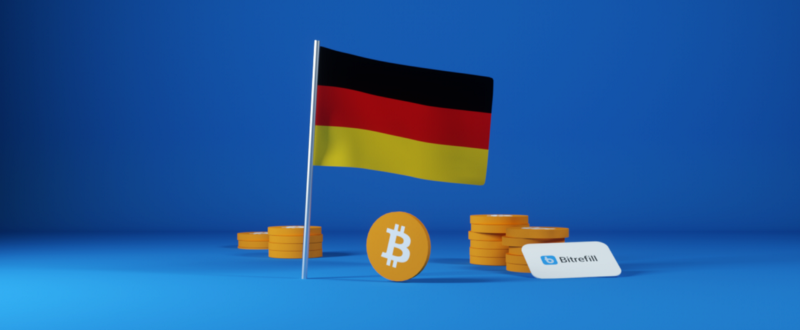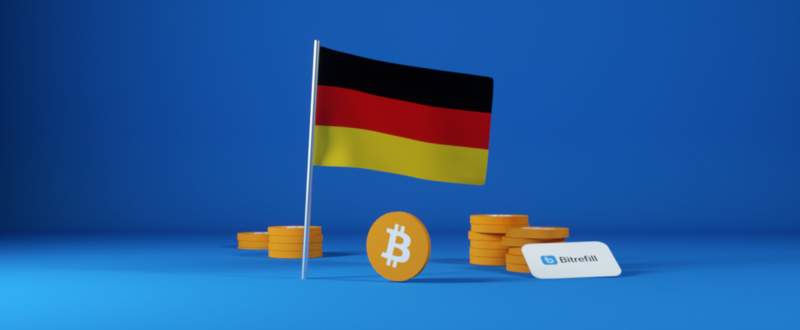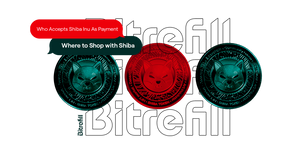Making the leap to using cryptocurrency can be daunting for a newcomer. There are lots of scams, and good information is hard to come by. Let’s take a look at some of the pitfalls to avoid for those new to crypto.
Picking a crypto wallet
Choosing a good wallet is one of the most important things for a new user.
A wallet is an app that lets you store, receive, and send cryptocurrency. There are many wallets and all of them have various degrees of strengths and weaknesses. The most important thing to know about wallets is the different kinds of them.
To sum things up, there are two major kinds of cryptocurrency wallets, hot wallets (those connected to the internet) and cold wallets (those which are offline). Hot wallets come in various flavors, there are mobile wallet apps, desktop wallet apps, and web wallets. Some are cross platform, so you can use them on your computer and phone.
Some web wallets, like those of exchanges, are custodial, meaning they hold your private keys. It’s generally considered a good practice to avoid this kind of arrangement because the custodial service could freeze your funds, steal them, lose them, get hacked, etc.
It is best to use a wallet for which you hold the private keys. When you create a new wallet, you’re usually given a 12–24 word recovery seed. With this 12–24 word cipher, you can always recover your coins, even if you have lost or damaged your computer or mobile device. It is extremely important not to lose this recovery seed, not to type it on a computer, or share it with anyone.
Your private keys are meant to stay private. If someone gains access to your recovery seed, they can steal your money, so guard it accordingly. Many people make several copies and keep them in a few different secure locations, so if anything ever happens, they have a contingency plan. Having a good way to backup your private keys is vitally important, as many, many more people have lost their coins by losing their private keys, than to a hacker’s attack.
Cold wallets, or wallets not connected to the net, also come in several flavors. There are hardware wallets, which are devices specifically designed to securely store coins offline for long term storage, and there are paper wallets. Paper wallets are usually just a piece of paper with a QR code to receive funds. Paper wallets should be avoided, as they usually do not contain a change address, which could lead to a loss of funds, if they are not used correctly.
Hardware wallets are the most secure, as they are offline. Which means even if your phone or computer is hacked, your funds will be safely stored on your hardware wallet device. Hot wallets are the most convenient to use, if you’re planning on spending crypto, or receiving payments, although they are less secure than an offline wallet, since if an attacker gains access to your device, they could potentially transfer your funds to another wallet which they control.
One last thing to note about wallets, is that some are Bitcoin-only wallets and others allow you to store Bitcoin as well as altcoins. This means you should pick your wallet based on your specific needs.
If you plan on trading and need to store many different coins in your portfolio, you’ll need a multicoin wallet. If you’re just trying to hodl some BTC for a rainy day, a Bitcoin only one is better as they have a smaller attack surface. If you want to use the Lightning Network, make sure you pick a wallet that is Lightning compatible.
We have done most of the legwork for you, and have created three wallet guides, one for Bitcoin-only wallets, one for multicoin wallets, and one for Lightning wallets, that send and receive Bitcoin but in a cheaper and faster way. If you need advice on picking a great wallet app, the wallet guides are a great place to start:
Lightning Network Wallet Guide
Purchasing your first coins
Ok, so now you’ve installed a wallet app, and safely stored your recovery seed, so how can you get some Bitcoin?
The most popular way to get some crypto is by using a crypto trading exchange. Just like wallets, there are many, many different exchanges. Some are licensed and fully regulated, others are totally unregulated, and some are peer to peer.
They also have strengths and weaknesses, but as a general rule of thumb, you can usually assume that if an exchange is regulated, they will have highly intrusive verification in the way of AML/KYC. They will typically want to have a copy of your identity documents, a selfie, and also proof of residence.
These regulated exchanges are the least scammy and usually have decent liquidity. They usually integrate with your bank account so you can convert crypto to fiat and vice versa, but they want to know all your private info with no exceptions. Even with regulatory compliance, they still get hacked from time to time, or go insolvent from mismanagement, so they are not 100% safe.
There are also unregulated exchanges, but they should be avoided, because there are less safeguards in place for new users. This means something like wash trading, which is illegal in developed financial markets, may be perfectly legal in a less strict jurisdiction, where an unregulated exchange may be operating. It’s true that unregulated exchanges offer more freedom, but they are also riskier to use. The likelihood of an exit scam, theft of funds, or a hack is a bit higher with an unregulated exchange, than it is with a regulated exchange.
Lastly, there are Peer to Peer (P2P) exchanges, and these are services which connect buyers and sellers and charge a fee. P2P exchanges offer the most freedom, but they often have much less liquidity, so you may wait a while to find a seller or buyer. Many P2P exchanges can be used completely anonymously, while others have AML/KYC procedures in place.
P2P exchanges can also be risky, as you’re trading with a stranger, who may try and scam you or steal your funds. While these platforms do try to incentivize honesty, mediate disputes, and ban problem users, sometimes bad actors can slip through the safeguards, so be cautious when trading, especially if doing so face to face or for large amounts.
Like wallets, learning the ins and outs of exchanges can be overwhelming for those new to crypto, so we have created an exchange guide which gives recommendations of reputable and popular exchanges, world wide. If you need help picking the right crypto exchange, this guide is for you.
How to easily acquire Bitcoin on every continent, (except Antarctica)
How to make a problem-free cryptocurrency transaction
To use crypto like a seasoned veteran, there are a couple important things to take note of. The most important is the crypto motto of “Not your keys, not your money”. This is in reference to the fact that if you don’t control the private keys to your wallet, then you don’t actually own your coins. If you don’t control your own keys, all you own is an IOU.
This is why it is best to avoid custodial wallets and if you must use them, like on an exchange, for example, only use them for the trading you’re doing then withdraw your funds, as they are not secure for long-term storage.
The next thing to take note of, is the amount in fees that you choose when you make your payment. Crypto fees compensate miners in Proof of Work (PoW) blockchains, and rewards validator nodes in Proof of Stake (PoS) blockchains.
Bitcoin fees are a free market that provides service to the highest bidder first. This means that miners are going to validate the transactions who have paid the most, because the miners themselves earn the fees.
If you don’t pay enough in fees, your transaction could be delayed for hours or even days in some cases. This can be very frustrating if your payment is time sensitive, and your payment won’t confirm. Onchain congestion typically happens when Bitcoin price changes rapidly and traders scramble to exit or enter positions, causing fees to spike.
During periods of onchain congestion, you can avoid delays and problems in several ways.
There are 4 different ways to overcome network congestion:
- You can add credit to your Bitrefill account with BTC and make instant, no-fee payments from your account’s balance.
- Bitrefill recommends a sufficient fee when you place your order, so your payment will be confirmed quickly, you can use this recommended fee for a fast confirmation. As an alternative, you can use a fee estimator site like bitcoinfees.net and make sure you pay a high enough fee.
- You can use Lightning Network, which is much cheaper and faster than onchain BTC transactions, with much of the same security as BTC.
- You can use an altcoin which has faster blocks/less usage than Bitcoin, but they are much less secure, and altcoins have even more price volatility than Bitcoin does.
Another very important thing to be aware of, is that Bitcoin is like digital cash, so if you send it to the wrong address, there is no way to get it back. Always make sure you double check the address that you’re sending a payment to, and make sure the address is correct, and that you’re sure of it, BEFORE sending your coins.
Warning
Also, if you’re sending a payment from a custodial wallet or an exchange wallet, they often will take out an additional withdrawal fee from the amount you’re sending, which will make the amount you sent arrive with less than you’re trying to send, as the withdrawal fee has been subtracted.
They also may process withdrawal requests in a batched transaction, where they process all withdrawals in one transaction, once every 24 hours, which could cause your payment to be significantly delayed. This typically causes problems for someone trying to make a time sensitive transaction.
You can learn more about Crypto fees, here:
How do Bitcoin Transaction fees actually work?
You can learn some tips & tricks for saving money on fees, here:
Save transaction fees while living on crypto
Using the Lightning Network
Because of the onchain limitations and congestion issues caused by Bitcoin’s Blockchain which prioritizes security over convenience, the Lightning Network has been developed as a scaling solution, to make payments instant and convenient on a payment layer built on top of Bitcoin.
The Lightning Network uses peer to peer payment channels to create a network where anyone can send instant payments, through multiple hops along the network of payment channels, to any other user on the network. As more users join the network and open channels, the Lightning Network’s transactional capacity increases, exponentially. All of this takes place in microseconds, and has fees in fractions of a penny.
To make sure the transactions are valid, they are batch-settled to the base layer, as a single onchain Bitcoin transaction, benefitting from the security and immutability of Bitcoin, itself.
The real magic happens when you and I both, have other channels open with many other network participants, and we can route payments in secure hops along an entire spiderweb network of channels to anyone else who is also on the network, anywhere in the world, instantly, securely, cheaply, and in a trust-minimized, and censorship-resistant fashion.
Lightning also makes sub-penny micropayments possible for the first time, ever.
This could lead to streaming payments, where you pay for content you consume, or are paid your wages from your job, per second, in real time, in exact amounts, in BTC. This could also create new ways to do business, that were previously impossible under legacy finance infrastructure.
Lightning also allows for instant cross-blockchain atomic swaps, which would allow you to exchange your Bitcoin, instantly and trustlessly, for other cryptocurrencies. Potentially, we can see millions of transactions per second, with an almost unlimited transaction amounts, being processed instantly, without a trusted third-party intermediary.
When the Lightning Network was first released, it was highly technical, and had almost no user interface, which made it extremely difficult to use for those who weren’t programmers. Since then, tons of progress has been made, and we now have user-friendly Lightning Network wallet apps, and you don’t even need to run a node, or manage payment channels.
To learn how to use Lightning:
An absolute beginner’s guide to using the Lightning Network
A guide to using Muun, a beginner-friendly Bitcoin & Lightning wallet:
Tutorial: Muun wallet for instant and cheap payments
A guide to earning Sats on the Lightning Network:








